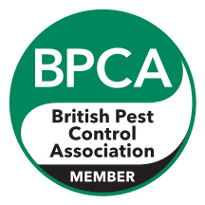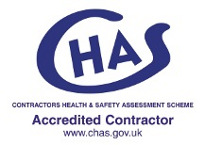Welcome to Rat Control Chelmsford We can help with all your Rat Control Problems.
Pest Control Chelmsford are committed to providing a Rat Control and prevention service in Chelmsford which is efficient, dependable and a safe working environment for our customer whilst complying with legislative requirements.
We have gained many customers through recommendations over the years, both from the commercial and domestic market.
St George’s Pest Control Ltd is a member of the BPCA (British Pest Control Association) and has several accreditations including CHAS, Constructionline, Safecontractor, CSCS and have been approved by the Essex County Council – Buy with Confidence scheme.
For all your Rat Control Problems and for a Rat Control Quote please contact us on 01245 327 274
Rats
There are two species of rat in Britain, the Brown Rat and Black Rat or Ship Rat.
The Brown Rat is the larger of the two, often weighing up to 500 grams and measuring between 20-25cms, not including the tail (which is shorter than its body length). It has a blunt nose and small hair-covered ears.
The Black Rat weighs only half as much and is slightly shorter. It has a pointed nose, large almost hairless ears, a more slender body and a long thin tail that is longer than its body.
The Brown Rat is the more common species and tends to stay near ground level. The Black Rat still occurs in seaport towns and is a more agile climber, often entering the upper floors of buildings. In towns Brown Rats often live in sewers but in the countryside can be found in fields and hedges.
Both species breed rapidly and become sexually mature in about three months. Each female may produce from three to 12 litters of between six and eight young in a year. The young are born blind, helpless and naked and depend on their mother for food for about three weeks before they are sufficiently developed to take solid food.
Brown rats will burrow underground or into suitably soft material to make a nest. Likely nesting sites are refuse tips, loose soil under sheds and earth banks. Nests may be made of chewed paper, straw or insulation material.
Rats, like mice, need to gnaw to keep their constantly growing incisor teeth worn down. They damage woodwork, plastic and lead pipes and their gnawing habit will sometimes strip insulation from electrical cables.
Creatures of habit, rats leave regular “runs” to and from feeding areas. They can be a menace to poultry, eating eggs, chicks and animal feed. Rats feed mostly at night and an average size rat will eat 50g of food a day.
Rats are also capable of spreading many diseases and can transmit food poisoning, Weil’s disease, typhus, rat bite fever and other diseases. They contaminate more food than they consume and their urine can pollute stagnant water.
Treatment:
Rats in internal areas
Rodenticide baits installed into lofts, basements, riser cupboards, sheds and any areas safe to do so.
Every treatment includes weekly follow up visits until the rat problem has been cleared.
Any dead bodies are removed and disposed of through our controlled waste management system.
Rats in external areas
Lockable metal bait boxes installed into rat runs and areas where rats are foraging for food. Rodenticide baits applied directly into burrows ensuring burrows are covered up. Rats are very cautious of new objects and it can take several days for the rats to start feeding.
If possible, eliminate harbourages such as gaps under sheds, loose piles of wood or neglected weed patches. Do not encourage rats by leaving scraps of food out of doors.






